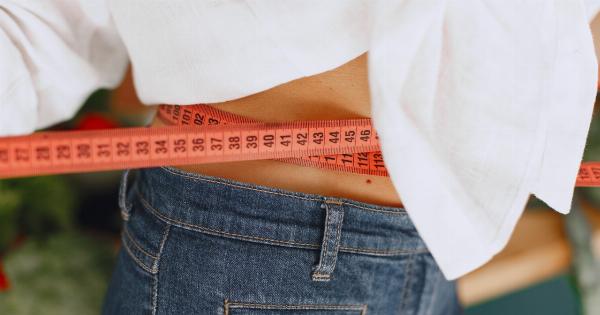Weight can be a tricky subject to tackle. With the prevalence of mixed messages and the rise of conflicting information, determining what is a normal weight range can be overwhelming.
Most people focus on the number on the scale, but that alone is not a sufficient way to evaluate whether your weight is healthy or not. In this article, we will explore some basic evaluation ways to check if your weight is within normal range.
1. Body Mass Index (BMI)
Body Mass Index (BMI) is one of the most commonly used methods to evaluate body fat in adults. It takes into account height and weight to determine if you have a healthy weight.
A BMI of 18.5 to 24.9 is considered healthy, 25 to 29.9 is overweight, and 30 or more is obese. However, BMI doesn’t differentiate between fat and muscle. This means a muscular athlete may have a high BMI but a low percentage of body fat.
2. Waist Circumference (WC)
Another way to evaluate weight is through waist circumference. Extra weight around the waist can increase the risk of developing health issues. A healthy waist circumference for men is 40 inches or fewer, and 35 inches or fewer for women.
If the measurement is above these values, it indicates an increased risk of health issues such as heart disease or Type 2 diabetes.
3. Body Fat Percentage (BFP)
Unlike BMI, Body Fat Percentage (BFP) measures the amount of fat in your body. A healthy range for men is between 10 to 20%, and for women is between 18 to 28%.
A high body fat percentage is linked to an increased risk of heart disease, high blood pressure, and other health problems.
4. Hip-to-Waist Ratio (HWR)
Hip-to-Waist Ratio (HWR) is useful in determining the placement of body fat. If the majority of the weight is around the waist, it increases the risk of developing health issues.
The ratio is calculated by dividing your waist measurement by your hip measurement. For women, a healthy ratio is 0.8 or less, while for men, it’s 1.0 or less.
5. Skin Fold Test (SFT)
Skin Fold Test (SFT) is another method to calculate the amount of body fat. It measures the thickness of skin and subcutaneous fat with calipers. This test can be inaccurate if the measurements are not taken correctly.
6. Waist-to-Height Ratio (WHtR)
The Waist-to-Height Ratio (WHtR) considers both height and waist measurements to determine the risk of health issues related to overweight or obesity. A ratio of more than 0.5 indicates an increased risk of developing obesity-related disorders.
The ideal ratio for most adults is 0.5 or less.
7. Basal Metabolic Rate (BMR)
The Basal Metabolic Rate (BMR) is the minimum amount of energy required to keep your body functioning at rest. Knowing your BMR can help you determine how many calories you need to consume to maintain your current weight.
It’s essential to keep in mind that this is just an estimate and can vary based on your daily activities.
8. Waist-to-Hip Ratio (WHR)
The Waist-to-Hip Ratio (WHR) is another measurement that helps assess the risk of developing health issues related to body fat distribution. This ratio is calculated by dividing the waist measurement by the hip measurement.
A ratio of 0.9 or more in men and 0.85 or more in women is considered high risk.
9. Bioelectrical Impedance Analysis (BIA)
Bioelectrical Impedance Analysis (BIA) measures body fat by passing a small electrical current through the body. Fat, muscle, and bone all have different conductivity levels resulting in the calculation of body fat percentage.
10. Dual-Energy X-ray Absorptiometry (DXA)
Dual-Energy X-ray Absorptiometry (DXA) scan uses X-rays to measure bone density, muscle mass, and fat mass. It is considered the most accurate method of measuring body composition. However, it is also the most expensive and time-consuming method.
Conclusion
Overall, there are many different ways to evaluate whether you are at a healthy weight or not. These methods may seem overwhelming but are crucial to keep your body functioning at its best.
Consult with your healthcare provider to determine what is the best method for you. Remember that being healthy isn’t only about the number on the scale, but also about maintaining a healthy lifestyle that includes physical activity and proper nutrition.
























